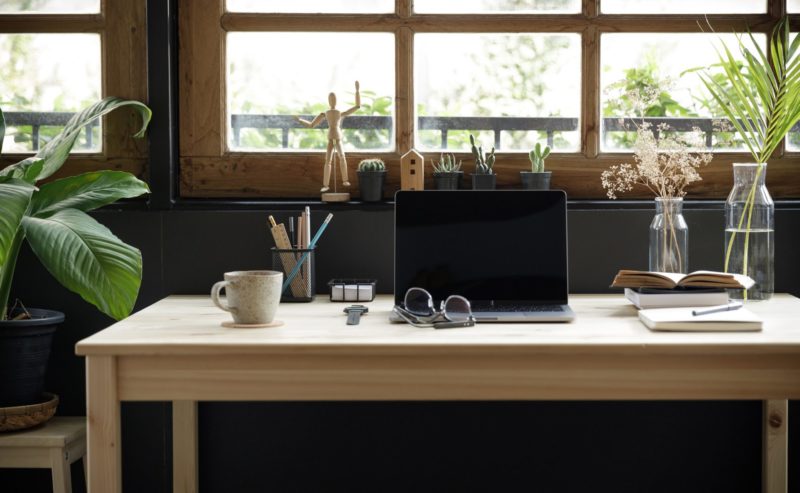In our now ever-evolving world of information and technology, it can sometimes feel like a maze or a veritable minefield when trying to navigate the numerous home office tech options that are on offer. From desktops to laptops, portable devices like tablets and mobile phones, and storage devices like hard drives and USB sticks, it is understandable how it can all seem to be a bit overwhelming when deciding what to choose and what suits your professional needs.
In order to help, we’ve compiled a few tips and tricks that’ll be sure to help you make the best tech choices. Read on to kickstart putting together your perfect at-home desk set-up.
Evaluate your Physical Space
When considering how best to organize your at-home desk or study setup, it is wise to think about how much physical room you have to work with, especially if you’re having your desk sit in a fixed area and won’t be moving it or your tech around that much.
This is a particularly key point with desktop computer monitors, which will work best for you if they’re placed in an optimal location and adjusted viewing angle from the get-go. Whether you house it inside a shelf or have it freestanding on the desk, it is best to make sure that the monitor is at a natural eye level when you’re sitting down to work.
Having your monitor positioned at eye level will ensure that you are not straining your neck or back during your workday. In essence, the physical position of your desk and all of your work essentials may very well help you maintain some healthy and sustainable working habits.
Multiple vs. Adaptable
How your ideal desk set-up works can often depend on the nature of your work and your own physical comfort preferences (i.e., how you like to sit). In this sense, what best suits your home office can often be determined by how you are.
If you’re someone who needs to deal with multiple programs or book numerous clients at a time, then multiple screens and a longer, wider desk or even a more modular working set-up may be the most effective and efficient way for you to operate.
Whereas, if you need to stretch out and relax your shoulders or walk around, a portable device, such as a tablet, can be a far better way to get your work done in a way that suits you best.
Standing vs. Seated
While a standing desk can allow you to keep good posture by straightening and stretching your back and relaxing your shoulders, some professionals may feel that they benefit far more from sitting properly rather than standing uncomfortably.
Many of us have heard of the problems that can come with sitting for extended periods at a time. In fact, in the modern-day, many health specialists have been urging professionals to stand for roughly an hour for every two to three hours that they may find themselves sitting.
However, if you choose to be seated, you should ensure that what you are sitting on is comfortable and, better still, ergonomically designed. This means that it allows for good sitting posture, supporting your lower back whilst allowing your feet to be at a 90° angle and in line with your knees when at rest.
Laptop or Tablet
With so much of our work on the go and remote these days, it can be a wise decision to go with something that is lightweight and can be easily transported rather than a more heavy-duty personal computer. This is where a laptop or tablet can be a great idea; however, it is wise to consider what features you require for you to meet your set tasks.
Although both laptops and tablets have both become reasonably light over the years, they both have their pros and cons, like any big purchase. If you’re looking to spend less while still ensuring that you have a good web browsing experience, a tablet can be great. However, a laptop is better for productivity and work purposes.
If you want the best of both worlds, then a 2-in-1 device – this being a laptop with touchscreen capabilities – may be the perfect solution for you!
Printers, Webcams & other Accessories
In this age of remote workers, networking devices have become more essential than ever before. Nowadays, virtually all of your home office tech can have smart capabilities, but there are some smart devices that you may find far more valuable than others.
For instance, a decent multifunction printer with WiFi connectivity can help you print, copy, scan, and even email your documents with minimal fuss. Similarly, a WiFi network or Bluetooth or USB microphone can help boost your video and audio quality during virtual meetings, which may help you make a far better first impression on your clients, coworkers, or customer base.
Conclusion
Therefore, when it comes to searching for your perfect at-home desk setup, it is wise to consider:
- The size and space of the room for your desk.
- Whether multiple screens are needed.
- Your posture and comfort of standing to sit.
- The pros and cons of portable devices.
- The essential tools or accessories that you may require.
May you be productive and comfortable workers, dear readers.

